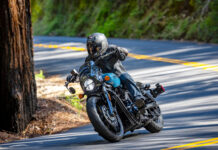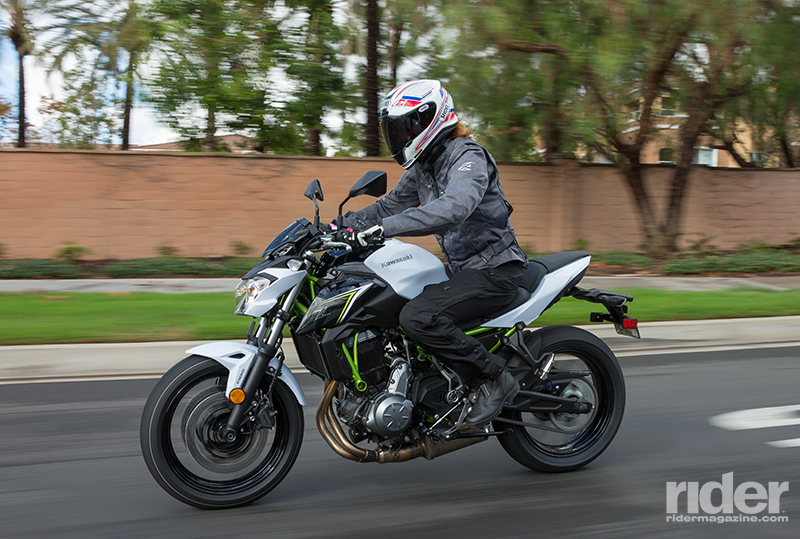
In the 1970s, an influx of in-line four cylinder motorcycles from the Japanese “Big Four” quickly took over the market. These quick, reliable and comfortable speed machines became known as Universal Japanese Motorcycles, or UJMs, both for their similarities to one another and their universal appeal. Kawasaki’s contributions to UJM domination included the mighty Z1 and the KZ650—which was known outside North America as the Z650.
The Z650 was discontinued after the 1983 model year, and has not returned to the Kawasaki lineup…until now. For 2017, the Z650 is back, and it fills out Kawasaki’s new Z collection, joined by the Z125 Pro and the Z900, which is replacing the outgoing Z800. The outrageously-styled Z1000, which never really seemed to catch on in the U.S. market, will not be available here for 2017.
Read our comparison test of the SV650, FZ-07 and Ninja 650.
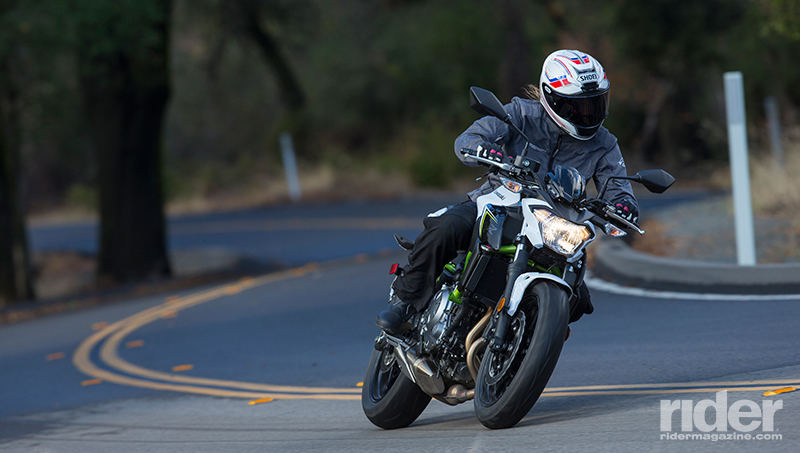
I got a chance to ride the new Z650 on a rare cool, drizzly day in southern California, on curvy mountain roads, in urban traffic and along the coastal cliffs near Dana Point. This middleweight Z was designed to be approachable for beginners, but with enough spunk to keep veteran riders interested. Its styling is what Kawasaki calls “Sugomi-inspired,” which basically means “not as outrageous as the Z1000, but still pretty cool.” I definitely like the Z650’s muscular, sculpted gas tank, two-piece seat, and angular front cowl and radiator shrouds. Compared to its chief rivals, the Suzuki SV650 and Yamaha FZ-07, its look is distinctly Kawasaki, and since many buyers of motorcycles in this category are likely to make styling a high priority in their purchase decision, the Z650 will be an attractive option.
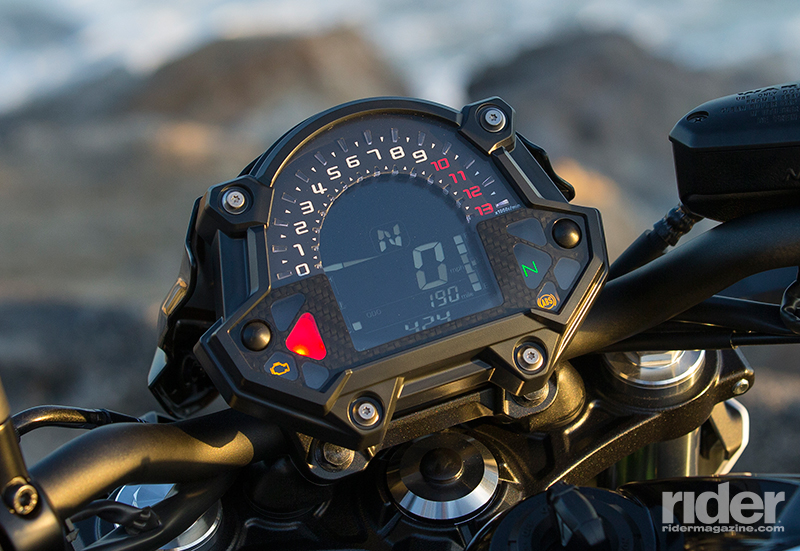
That’s not to say that Kawi considered performance as an afterthought, however. This new Z650 receives a redesigned 649cc parallel-twin engine, with new castings to accommodate a mechanical gear position indicator, a new camshaft design with improved overlap, slimmer intake ports, a new airbox, smaller 36mm throttle bodies (down from 38mm) and an improved torque and power curve that offers better mid-range performance. It even sounds better than the previous engine, with a pleasant howl from the intake and a throatier burble from the low-slung exhaust.
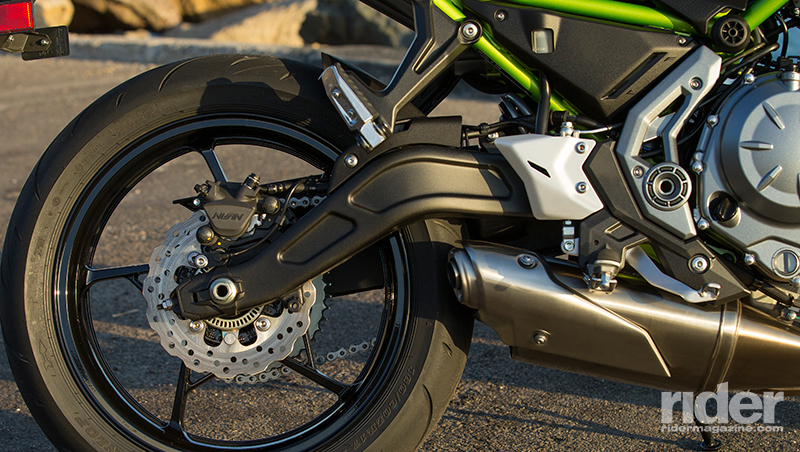
The other big news for the new Z is its weight savings. With no direct model replacement, we are forced to compare it to the 2016 Ninja 650 (which received a full redesign for 2017, including the new engine and frame). The 2017 Z650 is said to weigh a whopping 55 pounds less than the 2016 Ninja 650. Kawasaki claims a wet weight of 410 pounds for the ABS-equipped Z650, and our Ninja 650 ABS test bike weighed 467 pounds. Assuming the Z weighs a little more than what is claimed, 55 pounds is pretty close.
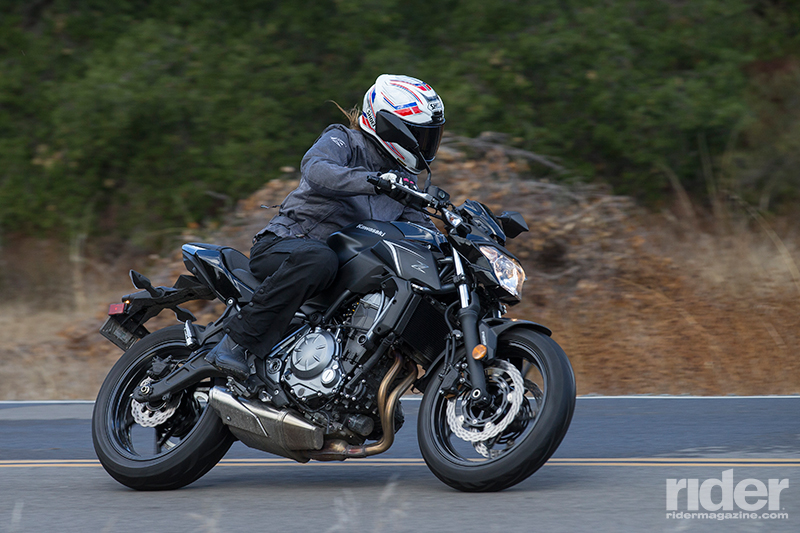
Much of that weight savings comes from the new high-tensile steel trellis frame, which is nearly 22 pounds lighter than the previous twin-spar backbone frame. The new gullwing swingarm shaves off another 6 pounds, and new wheels, axles, front fender, footpeg stays and exhaust also help in the weight-savings department.
Other features of the new Z include an assist-and-slipper clutch, a relocated horizontal back-link rear shock, a digital display with user-programmable tachometer functions, optional ABS utilizing the latest Bosch 9.1M unit and a low, 30.9-inch seat height.
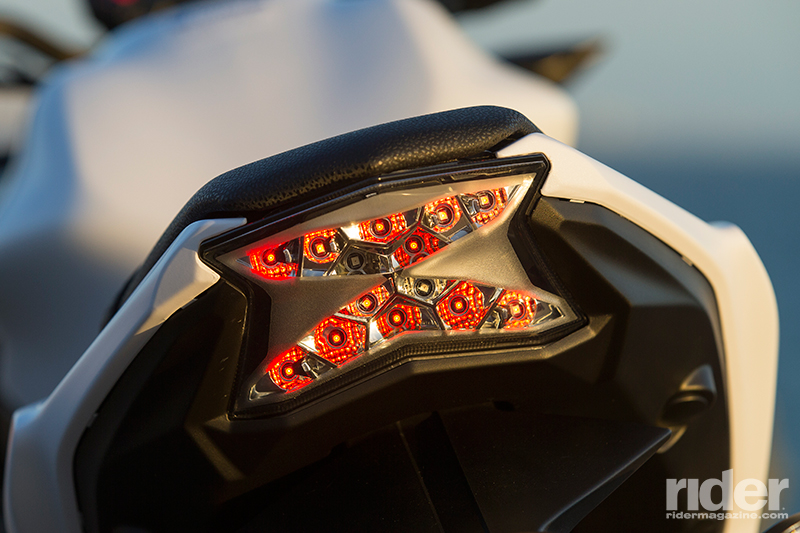
The first thing you notice upon releasing the easy-to-pull clutch lever is the Z650’s vastly improved power delivery. While the 2016 Ninja 650 had a noticeable dip in the powerband right around 4,500 rpm, this new Z650 just keeps pulling, and it’s smooth enough to be deceptively quick. It doesn’t have quite the snarly punch that the FZ-07 delivers, but the improvement over the previous 650 parallel-twin is remarkable.
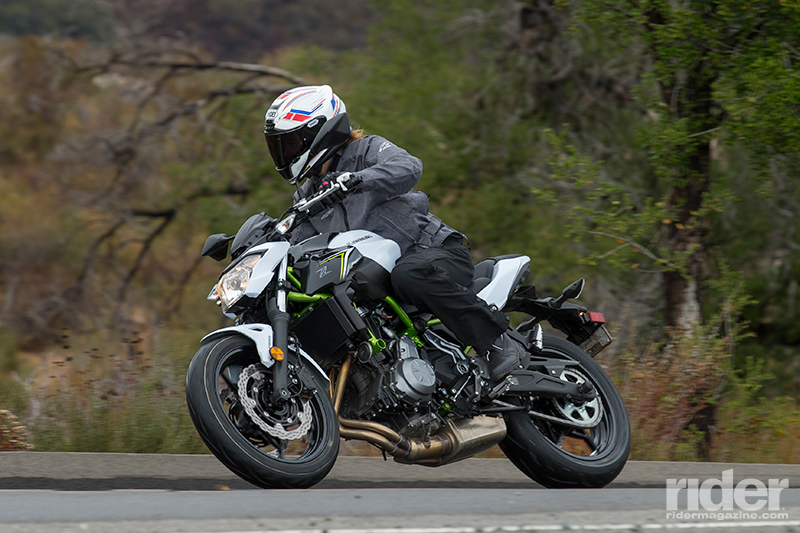
The middle Z carries the rider in a comfortable, neutral position, with the narrow bars angled back for a sporty feel, and the seat has enough padding to prevent a sore bum even after a full day in the saddle. Rubber pads on the footpegs and weighted bar ends keep any wayward vibes from reaching the rider, although the engine is so smooth they hardly seem necessary.
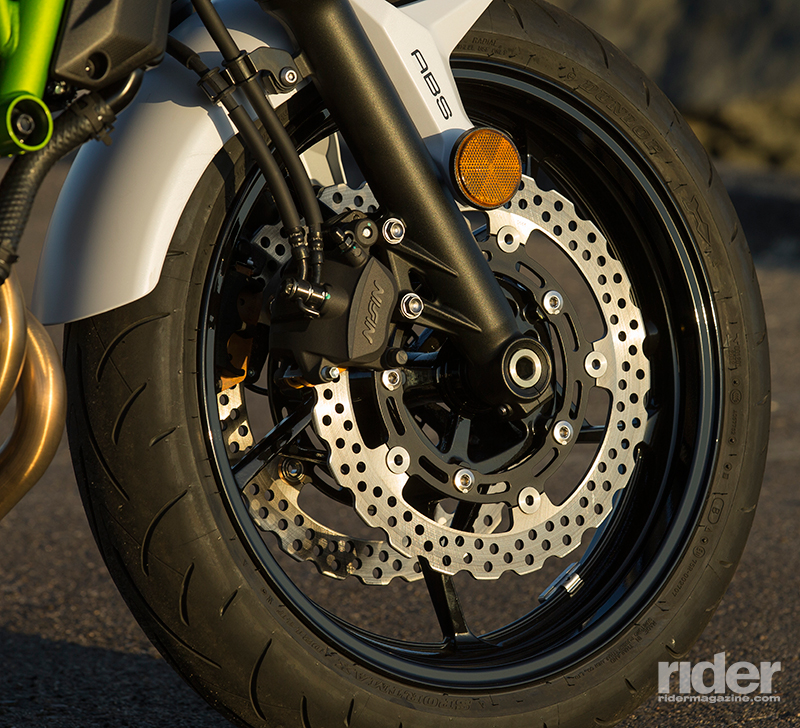
The trick new digital display is a welcome change from the aged design of the outgoing Ninja 650, with the gear position indicator placed front and center, and speed, engine temperature and fuel level all occupying permanent positions. The rider can also select between two tripmeters and an odometer, as well as time of day, instant fuel consumption, average consumption and range.
The tachometer has a unique digital sweep that points to analog numbers, and can be configured in three sweeper variations for a customized look. It also features a user-selectable shift indicator, which is programmable in 500-rpm increments.
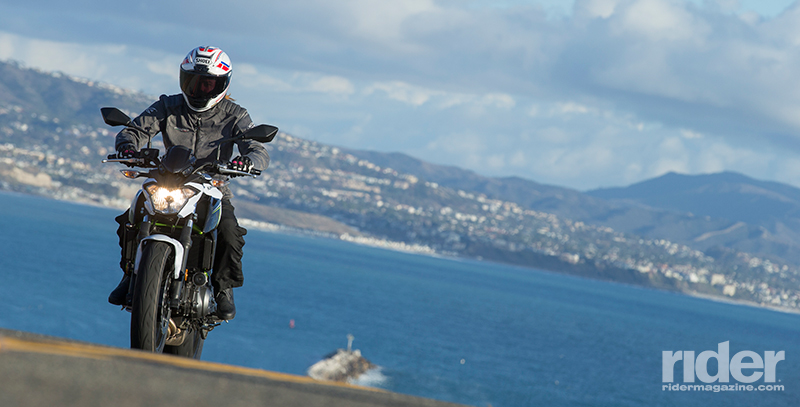
The wet roads on our test ride prevented us from pushing the pace as hard as we normally might, but when I was able to wick things up a bit the Z650 delivered smiles in abundance. Typical for bikes in this class, its 41mm Kayaba front fork is non-adjustable and lightly sprung, and the rear Kayaba shock is only adjustable for preload. That said, the Z650 was easy to fling through corners without being skittish. It delivers on its mission of being a midsize fun bike. We’re looking forward to spending more quality time on the Z; look for a more in-depth Rider Test in the March 2017 issue of Rider, and here on ridermagazine.com.
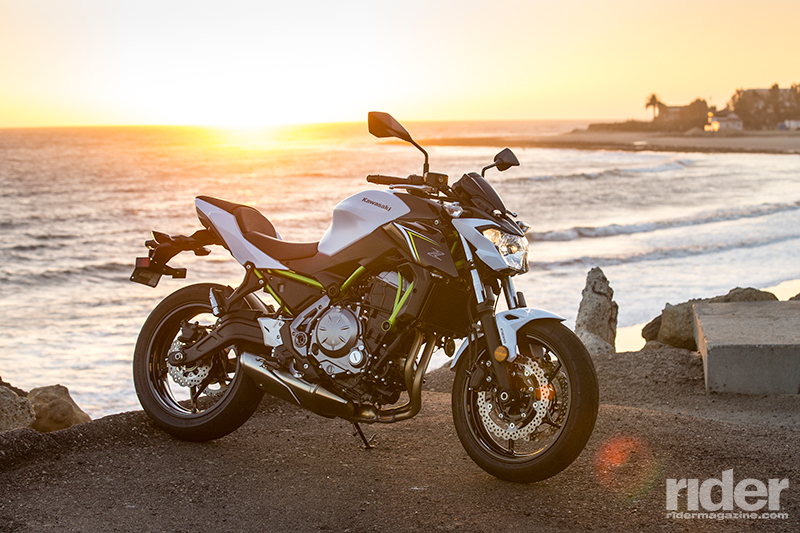
2017 Kawasaki Z650 Specs
Base Price: $6,999 (without ABS); $7,399 (with ABS)
Website: kawasaki.com
Engine Type: Liquid-cooled, parallel-twin
Displacement: 649cc
Bore x Stroke: 83.0 x 60.0mm
Transmission: 6-speed, cable-actuated assist-and-slipper clutch
Final Drive: O-ring chain
Wheelbase: 55.5 in.
Rake/Trail: 24 degrees/3.9 in.
Seat Height: 30.9 in.
Claimed Wet Weight: 410 lbs.
Fuel Capacity: 4.0 gals.
MPG: NA

